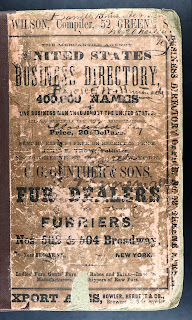I've written before about my indispensable Document Tracker (see Haven't I Seen You Before?). It's a spreadsheet that shows at a glance which facts or documents I've collected and which I'm missing.
I've also written about Family Tree Analyzer (see Why You Should Be Using the Free "Family Tree Analyzer"). It's a program that does what I was struggling to write a program to do. And it does it so much better than I could have imagined. (Get the latest version.)
Now I'd like to show you how Family Tree Analyzer can quickly produce a document tracker for you.
Step 1: Export a GEDCOM
Export a standard GEDCOM file from whichever family tree software you're using. You may need to click File / Export in your family tree software. You can also download a GEDCOM from Ancestry.com if that's where you work on your tree.
Step 2: Open GEDCOM in Family Tree Analyzer
Launch Family Tree Analyzer and open your new GEDCOM file. Click the Individuals tab to view a grid of every single individual in your tree. My tree has 19,341 people at the moment, and that's not a problem. There is no delay at all in displaying the information.
 |
| The Individuals view in Family Tree Analyzer |
Step 3: Export a Spreadsheet
Now click Export in the menu across the top and click the first option, Individuals to Excel. The program will ask you to name your file and pick a location for it.
 |
| Exporting your Individuals report |
The file will be in CSV format. That stands for Comma Separated Values. You can open a CSV file with any spreadsheet software at all—not only Excel.
Step 4: Work with Your New Report
Now you have a spreadsheet of everyone in your tree and several basic facts about them. You can hide or delete the columns you don't want, and add some that you find more helpful.
Try some creative formatting: Find every cell with the word UNKNOWN and highlight it in yellow. Now you can spot these items quickly.
 |
| With all your people in one file, your imagination is the only limit. |
I can review all the yellow-highlighted UNKNOWNs and work on filling in approximate birth, marriage and death dates. Entering an approximate birth date, such as Abt. 1900, makes it easier to distinguish people with similar names in your tree.
You can enter an approximate birth year for someone based on what else you know about them. For example, subtract 25 from the eldest child's birth year to approximate the parents' birth years. Or, if you have the mother's birth year as 1900 but not her husband's birth year, you can fill in Abt. 1900 for him.
Be sure to use the standard abbreviations of Abt. for about, Bef. for before, Aft. for after, and Bet. for between, if you're giving a range of years. (Note: Family Tree Analyzer prefers that you don't use a period—Abt instead of Abt.—but Family Tree Maker puts it in automatically. You can change this in Tools / Options on the Names/Dates/Places tab. Look for "Fact labels".)
How many ways will you use this Family Tree Analyzer report to fortify your family tree?
Find out what else you can do with this free software:





